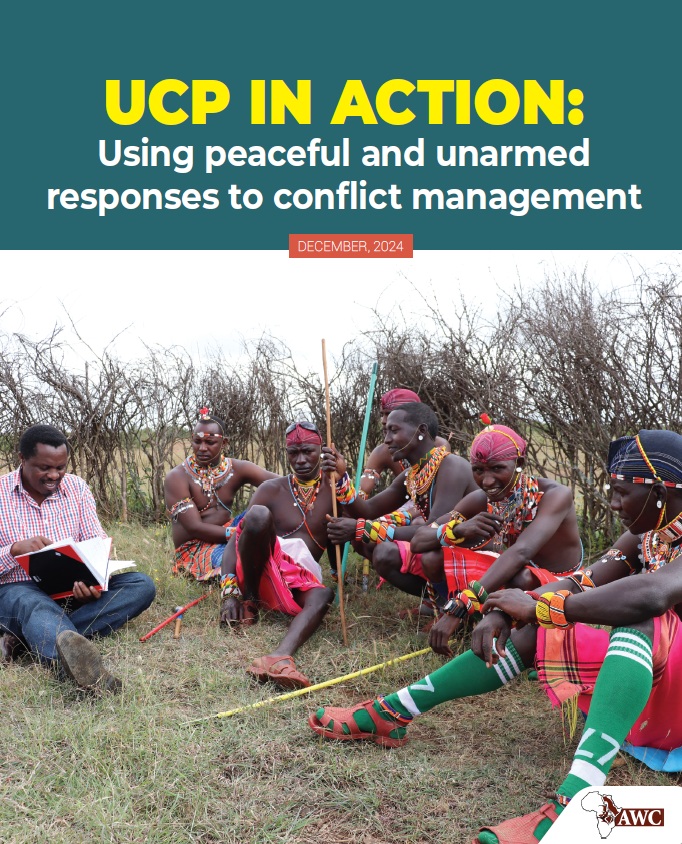While Unarmed Civilian Protection (UCP) approaches have proven to be effective in managing conflicts and protecting civilians trapped in conflicts, their application remains low in Kenya. This can be partly attributed to the low awareness and understanding of what UCP entails. Even in circumstances where UCP has been applied, those engaging with these methods are often not aware that they are using UCP approaches, and the unconscious application of the methods may affect the effectiveness of their interventions. The aim of this project was therefore to address low awareness and low uptake of UCP in managing conflicts in Uasin Gishu and Nairobi counties of Kenya. Drawing on research findings and good practices around UCP in the management of conflict by state and non-state actors, the project increased the understanding, visibility, preference for, and advocacy of UCP. The project responded to perennial conflicts in two counties. In Uasin Gishu County in the North Rift Valley the main causes of conflict are political tensions, cattle rustling, and contestation over natural resources such as water and pasture. In Nairobi, the main causes of conflict are struggles over scarce resources and job opportunities among young people and ethnic groups living in the Kibera, Mathare, and Kariobangi informal settlements as well as widespread discrimination based on ethnic origin and nepotism.

PROJECT ACTIVITIES
- The project produced radio programmes to create awareness of, advocate for, and educate communities on the approaches and benefits of UCP. These were aimed at communities, state actors, development partners, and civil society organisations (CSOs). The radio shows were aired on Kitwek FM Station that broadcasts to Uasin Gishu and other counties, and Ghetto FM radio that broadcasts in Nairobi, especially targeting populations in the informal settlements and low-income areas of the city.
- The project conducted two training workshops, each two days long, to build the capacity of selected media practitioners working in the two counties, Uasin Gishu and Nairobi. The workshops enabled the media practitioners to learn about UCP and about how to use the acquired knowledge to promote UCP as an approach to conflict management. The selected journalists had all reported on conflict before. These journalists were then invited to disseminate the findings of the two Creating Safer Space projects in Kenya, Strengthening Local Capacities for Unarmed Civilian Protection in Uasin Gishu led by Rural Women Peace Link (RWPL) and Nonviolent Artivism Against Police Brutality led by the Peace Tree Network (PTN).
- The project documented and showcased in-depth stories of change of how UCP approaches have been used to successfully manage conflicts in Uasin Gishu and Nairobi counties.
PROJECT TEAM


PROJECT OUTPUTS
Publication
The project has published a report, UCP in Action: Using peaceful and unarmed responses to conflict management. This contains six short articles that show how people in different parts of Kenya are using unarmed civilian protection to protect themselves and others in different contexts of violence.
Newspaper Articles
A journalist trained by AWCFS, as part of this project, has published two articles in the Star, a daily newspaper in Kenya:
- How Mathare residents are using unarmed methods to build peace (9 October 2024)
- Youth lobby steps up to stop crime, promote peace in Kibra (29 October 2024)
GALLERY









